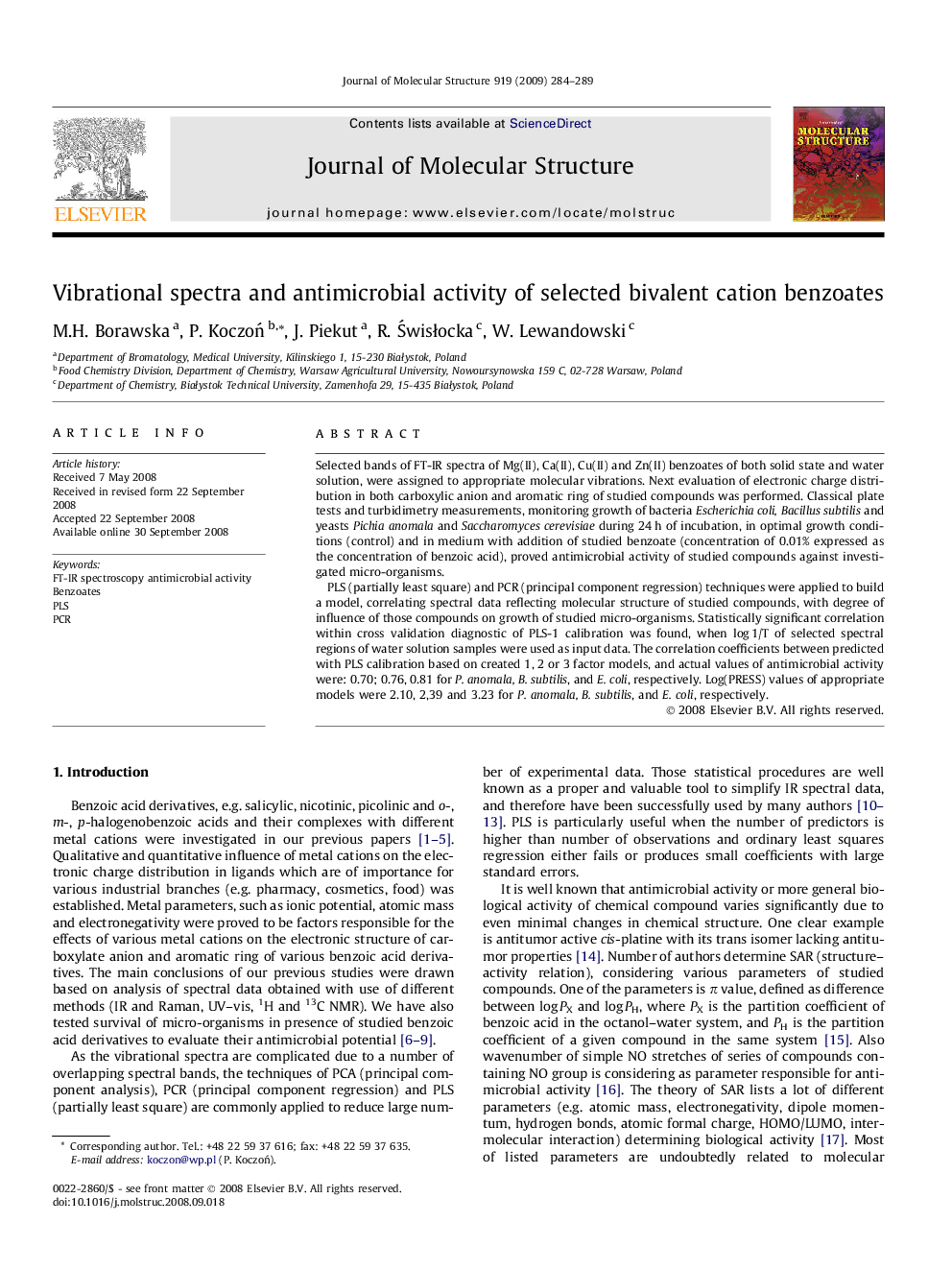| Article ID | Journal | Published Year | Pages | File Type |
|---|---|---|---|---|
| 1410459 | Journal of Molecular Structure | 2009 | 6 Pages |
Selected bands of FT-IR spectra of Mg(II), Ca(II), Cu(II) and Zn(II) benzoates of both solid state and water solution, were assigned to appropriate molecular vibrations. Next evaluation of electronic charge distribution in both carboxylic anion and aromatic ring of studied compounds was performed. Classical plate tests and turbidimetry measurements, monitoring growth of bacteria Escherichia coli, Bacillus subtilis and yeasts Pichia anomala and Saccharomyces cerevisiae during 24 h of incubation, in optimal growth conditions (control) and in medium with addition of studied benzoate (concentration of 0.01% expressed as the concentration of benzoic acid), proved antimicrobial activity of studied compounds against investigated micro-organisms.PLS (partially least square) and PCR (principal component regression) techniques were applied to build a model, correlating spectral data reflecting molecular structure of studied compounds, with degree of influence of those compounds on growth of studied micro-organisms. Statistically significant correlation within cross validation diagnostic of PLS-1 calibration was found, when log 1/T of selected spectral regions of water solution samples were used as input data. The correlation coefficients between predicted with PLS calibration based on created 1, 2 or 3 factor models, and actual values of antimicrobial activity were: 0.70; 0.76, 0.81 for P. anomala, B. subtilis, and E. coli, respectively. Log(PRESS) values of appropriate models were 2.10, 2,39 and 3.23 for P. anomala, B. subtilis, and E. coli, respectively.
